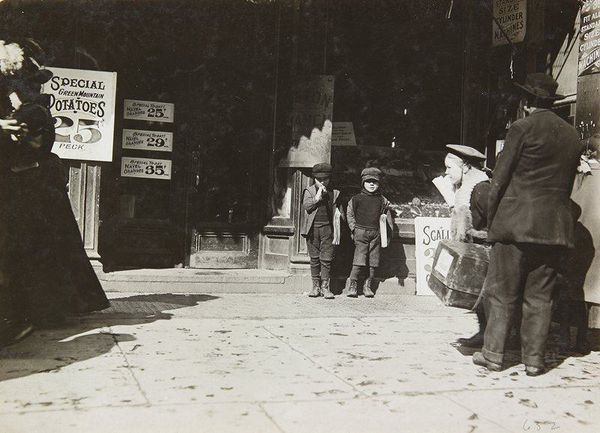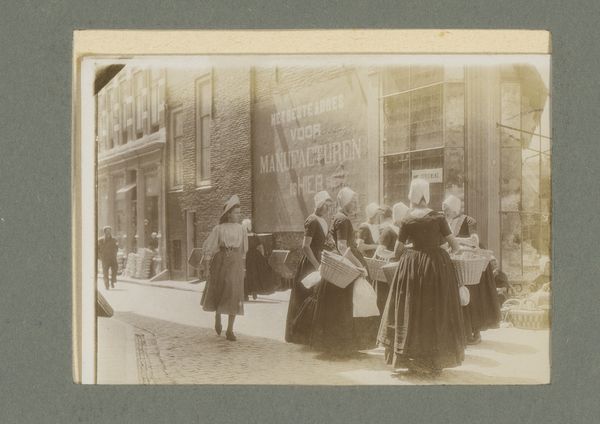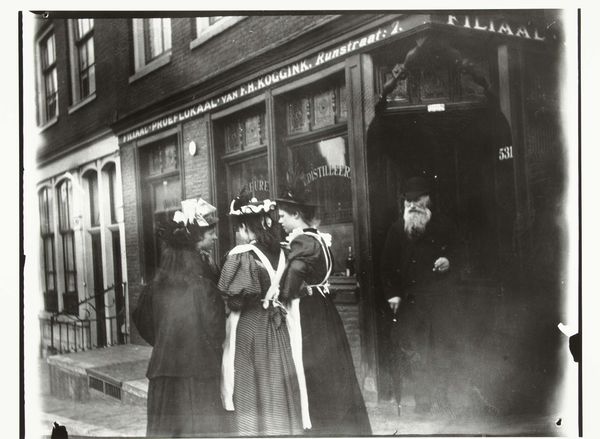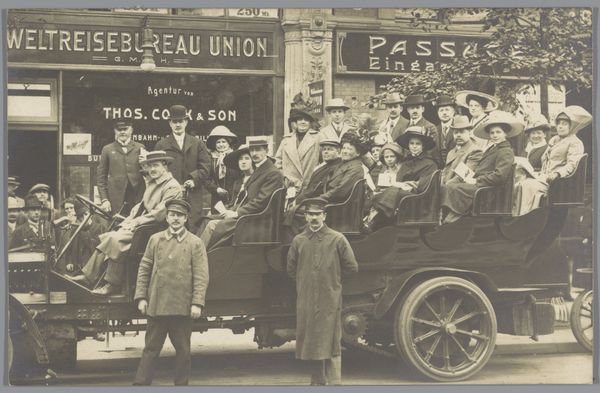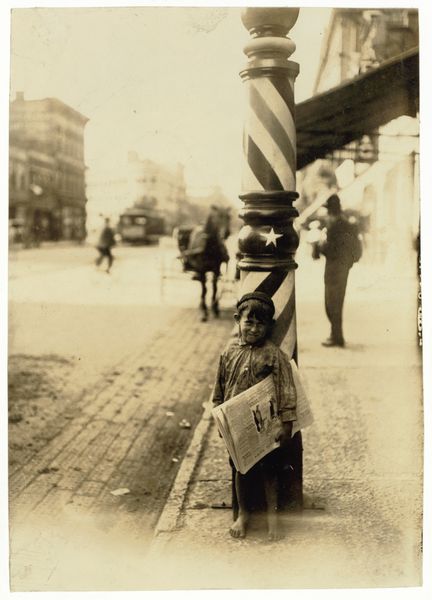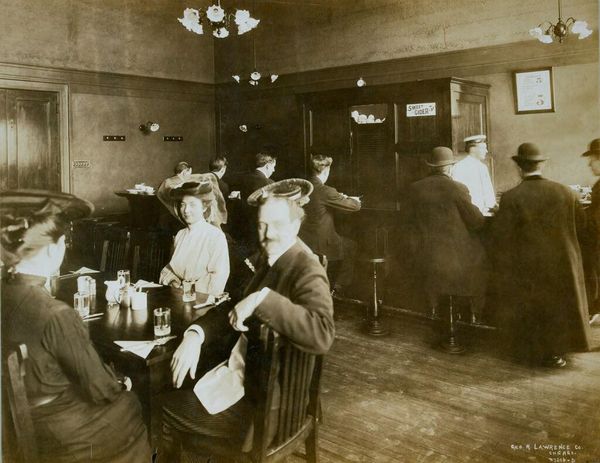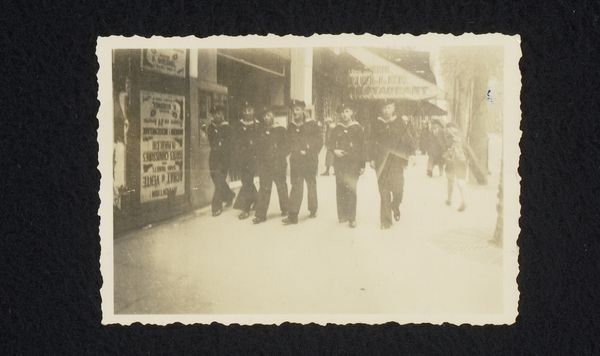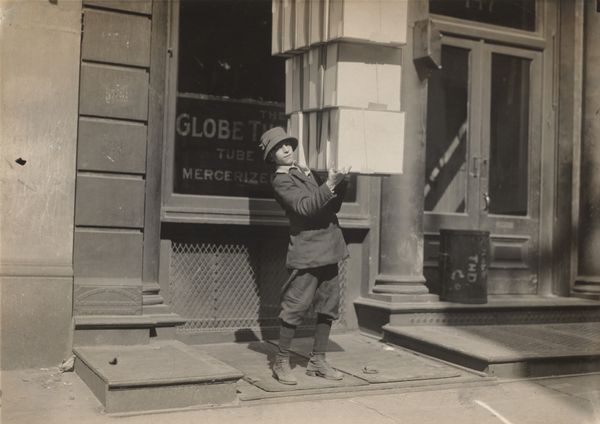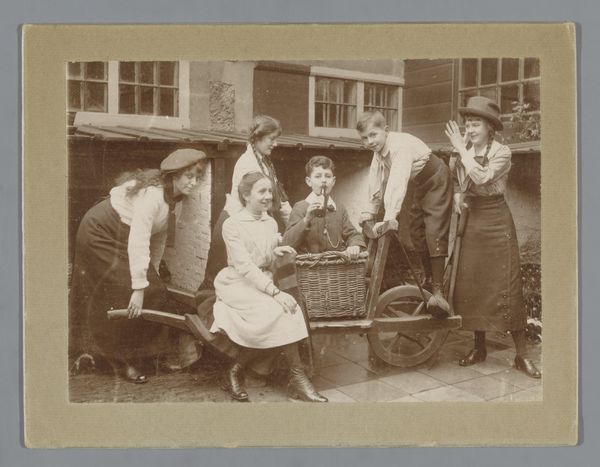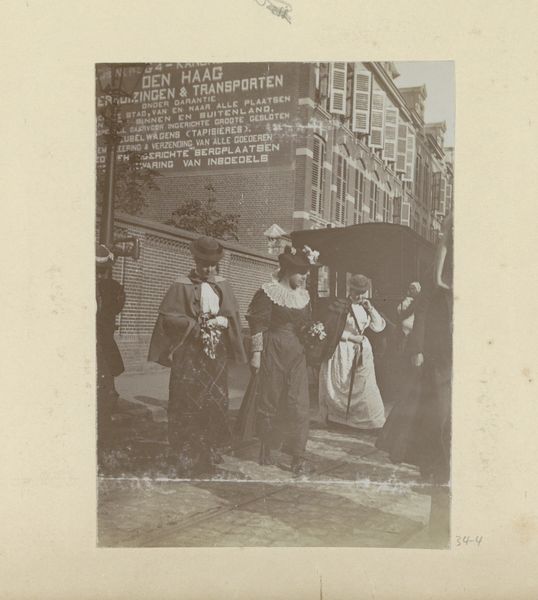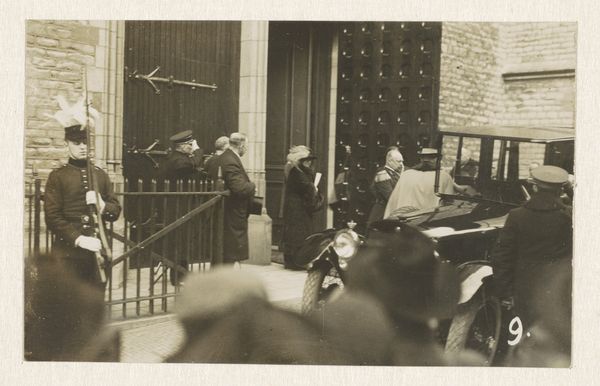
photography, gelatin-silver-print
#
portrait
#
photography
#
gelatin-silver-print
#
figurative photography
#
ashcan-school
#
genre-painting
#
person photography
#
realism
Copyright: Public domain
Editor: This is Lewis Hine’s "Joseph Bishop and Brother, Newsboys, Hartford, Connecticut, 1909," a gelatin silver print. It strikes me as quite poignant, seeing these young boys working in what looks like harsh winter conditions. What societal messages do you think Hine was trying to convey with this piece? Curator: Hine's work here speaks volumes about the public role of art in driving social reform. He wasn't merely documenting; he was building a case against child labor. Notice how he frames these boys, positioning them at the margins of an adult world, signified by the advertisements for alcohol behind them and the entrance to "Curry's Cafe" next to them. Editor: It's like they're caught between childhood and premature adulthood, forced to grow up too fast. Curator: Precisely. And consider where this image was circulated. Hine’s photographs were vital tools for the National Child Labor Committee, shaping public opinion and, eventually, policy. The power of photography lay in its supposed objectivity. It’s presented as fact. Editor: So, the seemingly straightforward documentation has a much deeper political and social agenda. Curator: Absolutely. Hine strategically used the camera to challenge the romanticized view of childhood, a key tenet of reform movements at the turn of the century. What appears simple on the surface is loaded with social critique. Editor: I never considered how the circulation of a photograph could be part of the artwork’s message. That gives me a whole new perspective. Curator: It demonstrates that art exists within a web of institutional forces shaping what it means and how it functions in the public sphere. And, more than that, art is designed to incite action. I am gratified to know our exchange provided you with additional ideas and awareness about the art work, "Joseph Bishop and Brother, Newsboys, Hartford, Connecticut, 1909."
Comments
No comments
Be the first to comment and join the conversation on the ultimate creative platform.
